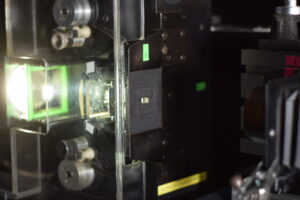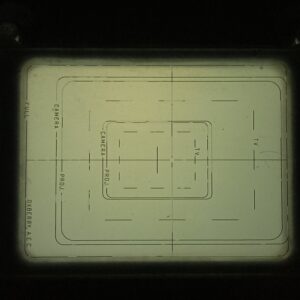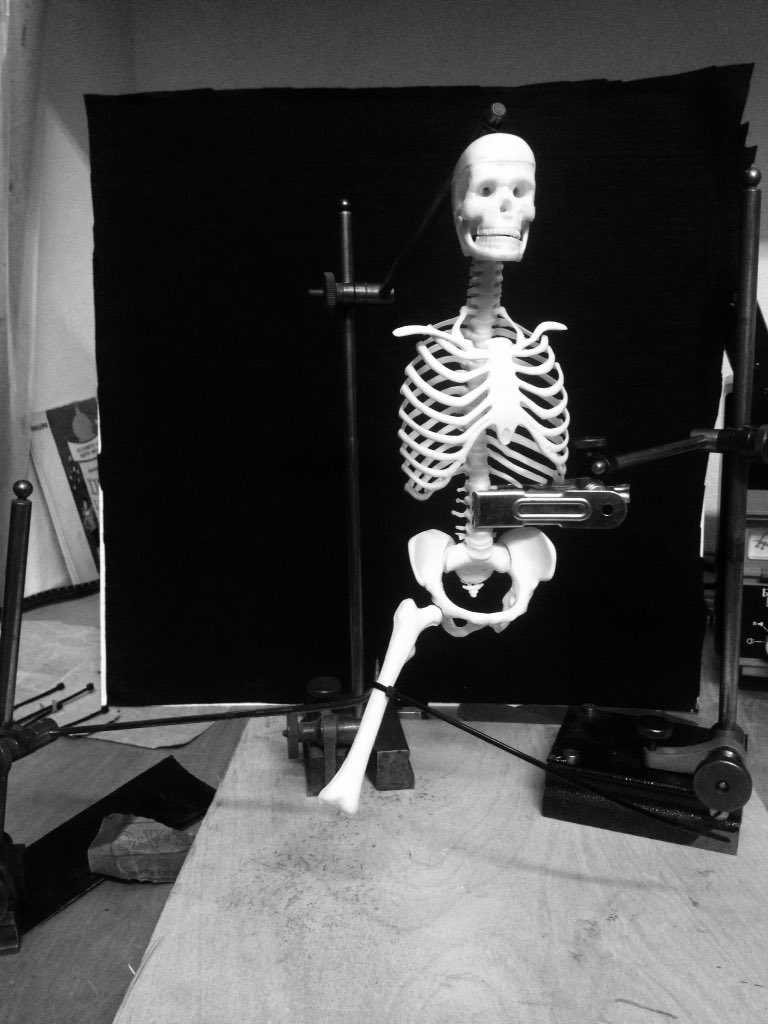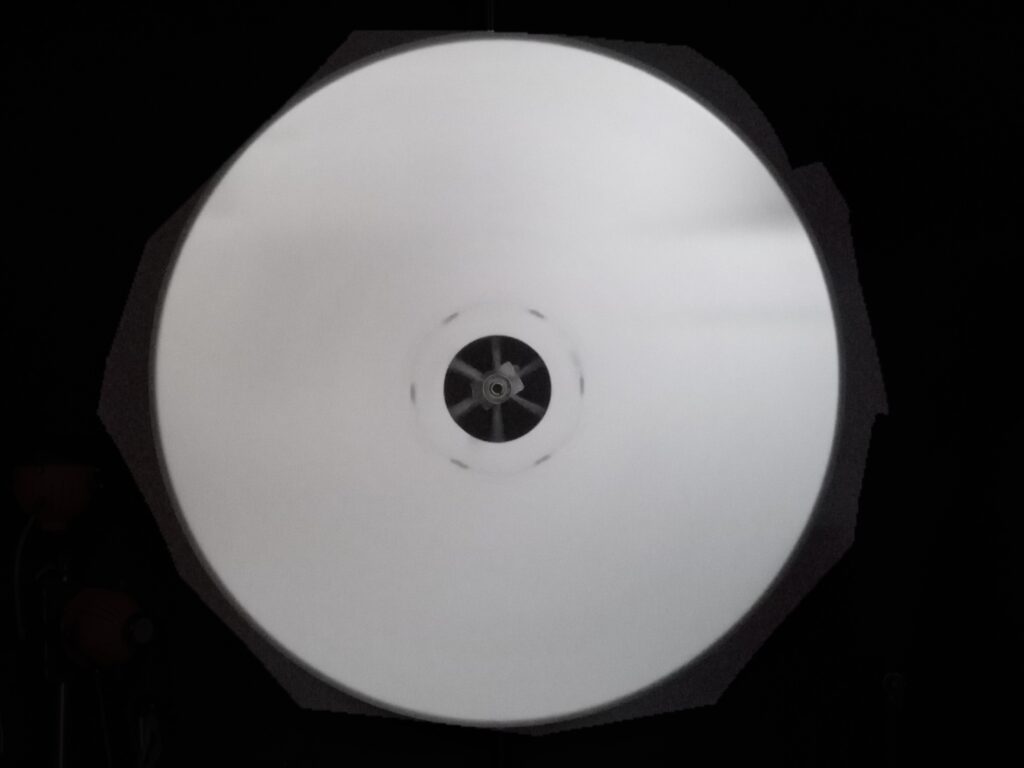Heres the projector/looper monitor project Ive been working on for a while now.
The mount holding the sensor has been taped onto the side of the projector to test the system. In a real world scenario you would mount this more robustly by your chosen method.
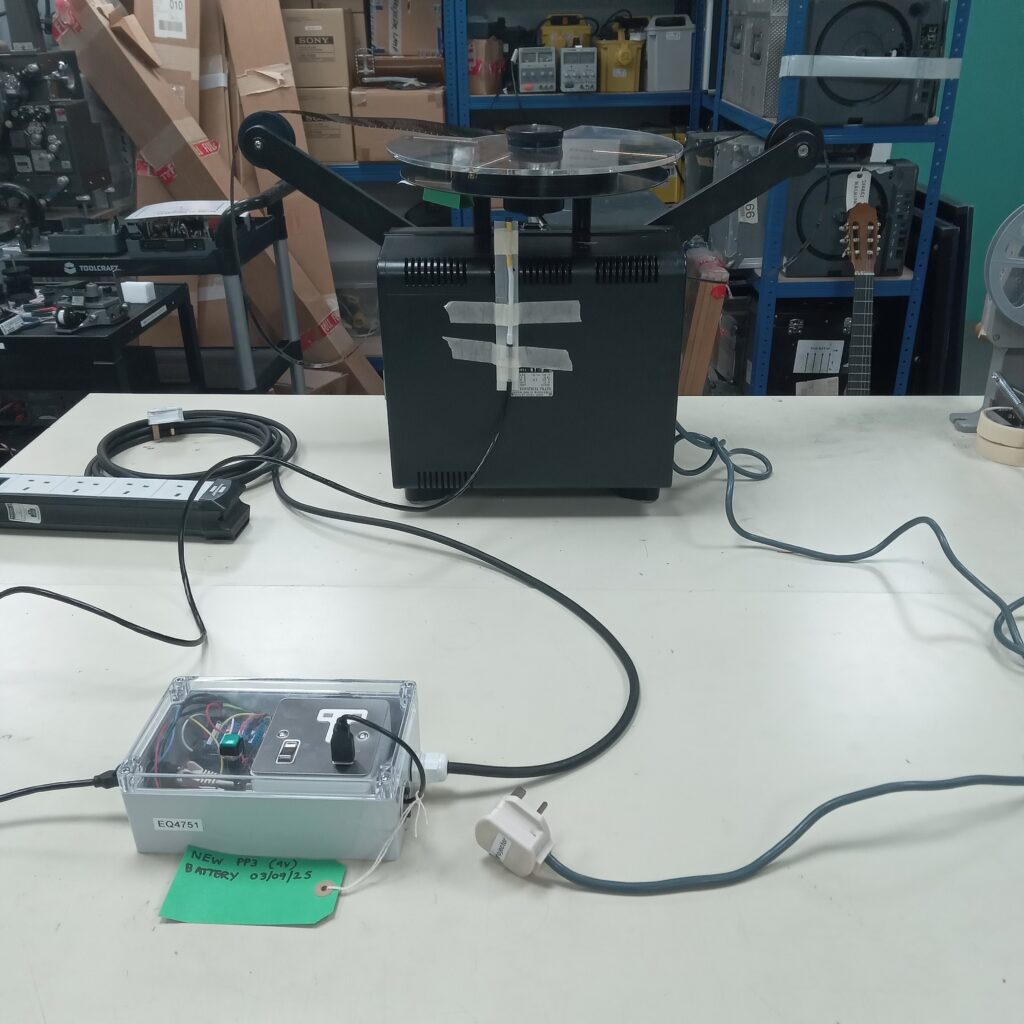
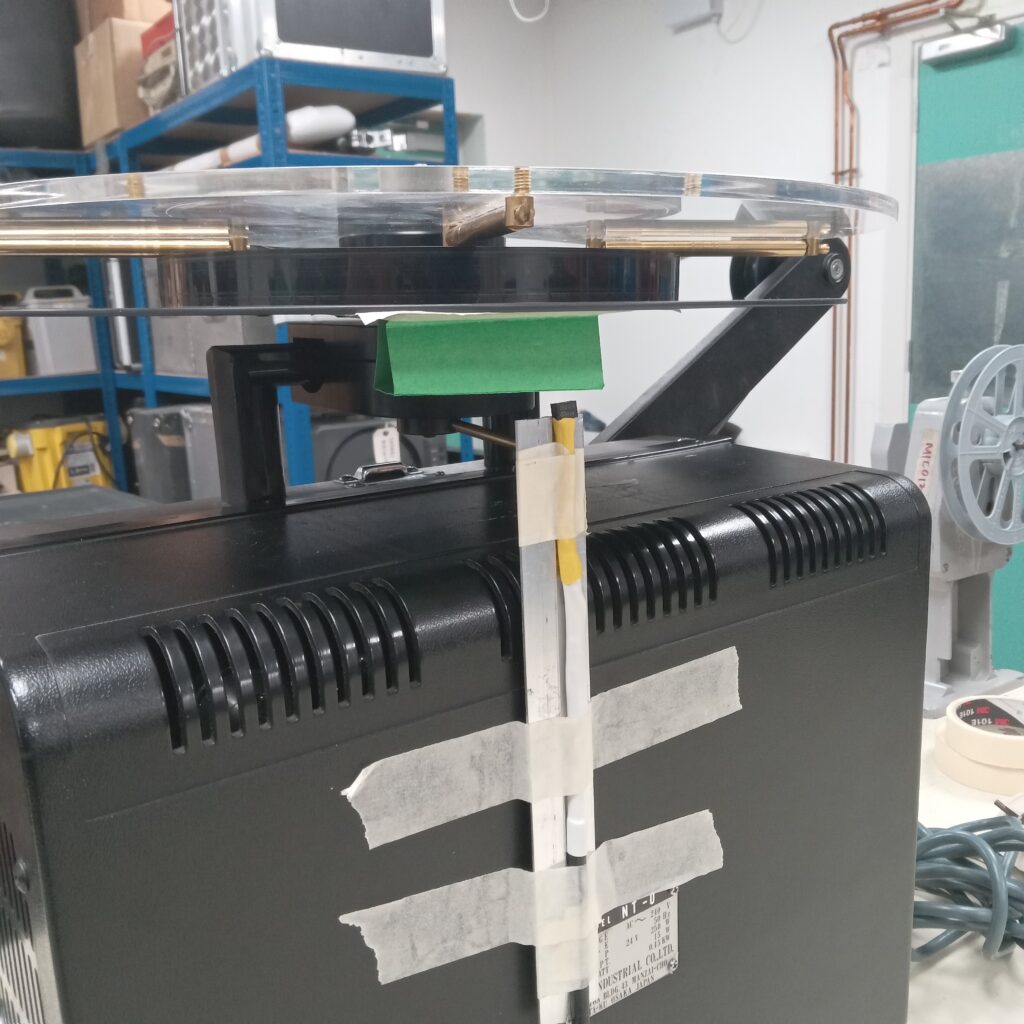
The system works like this. The safety box wires into the mains supply. Then the projector plugs into the box via the faceplate you can see below.
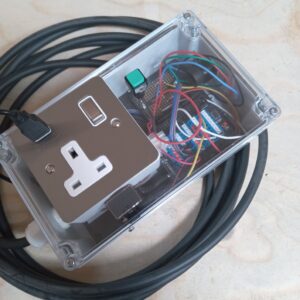
Via a RJ45 plug and CAT6 cable with sensor mounted on the end (which I solder/test and make) you connect the sensor to the projector so it is near (within 4mm) of a piece of card or other material that is light coloured. A piece of folded black card with a white bottom side will do. This can be seen in the video spinning underneath. This card itself needs to protrude down 25mm from the platter so a signal difference can be measured from the platter and the card surface.
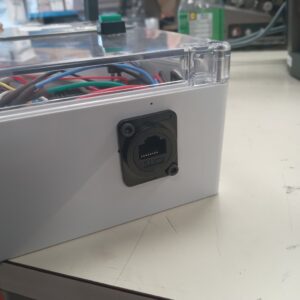
The system also works if measuring the flywheel as in this picture, perhaps for a display where there is no conventional looper or a hung or otherwise managed length of film. Here a length of white LX tape has been put on the outside rim of the flywheel, about half the circumference should do.
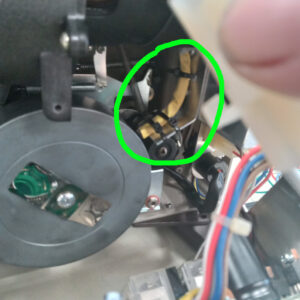
The CODE on the arduino, which is what the whole thing is built on, measures a difference between the light and dark (darker) surface and is instructed to do nothing if there are regular changes. BUT if there are no longer any regular changes it fires a relay which is in the box which disconnects the mains. The arduino draws its power from the faceplate USB socket so it also goes off. The green button connects a PP3 battery to boot the arduino which fires the relay ON at start so the system restarts.
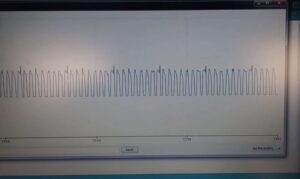
There are several parameters in the code which you can change or tweak to balance the system. One is the WINDOW of measuring, in this case this small looper has a rotation of about 3 seconds so you want at least a 5 or 6 second window. You could add more cardboard sensor triggers for instance, on a larger 40 minute looper, it doesnt matter. The others are things like a delay at the start after the relay switches ON, and before measuring/comparing, so that you can get a looper or projecor running. You could even add a global delay or timer that is set for 8 hours after first power up so in a gallery with set hours it would switch off by itself at closing time. Arduino (and other such things) are bloody great devices and easy to learn. BIG shout out to Matt McWilliams for some early coding and Mathew B at Tate Time Based Media conservation department for field testing.
